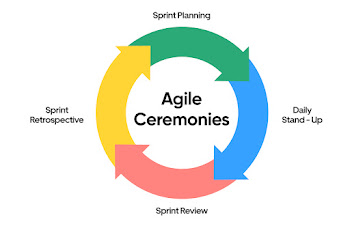What are the difference roles in Agile?
Agile Methodology:
Agile methodologies are about teamwork, customer satisfaction, constant refinement and breaking big projects into bite- sized pieces. By prioritising collaboration and communication, agile processes enable teams to pivot and respond to evolving customer needs while maintaining a high level of flexibility.
Agile teams typically consist of a smaller, cross-functional group of individuals compared to traditional Waterfall projects.
There are some common Agile roles and their responsibilities:
Product Owner:
- Represents the voice of the customer and stakeholders.
- Owns the product backlog, which is a prioritized list of features and functionalities for the product.
- Prioritizes backlog items and ensures they align with business goals.
- Collaborates with the development team to define acceptance criteria for features.
Development Team:
- A self-organizing group of developers, testers, and other specialists with the skills necessary to deliver the product.
- Responsible for breaking down user stories (requirements) into actionable tasks.
- Estimates the effort required for tasks and commits to delivering a set of features within each sprint.
- Develops, tests, and delivers working software increments at the end of each sprint.
Scrum Master (if using the Scrum framework):
- Acts as a coach and facilitator for the Agile team.
- Ensures the team understands and follows Agile principles and practices.
- Removes roadblocks that impede the team's progress.
- Facilitates scrum ceremonies like sprint planning and sprint reviews.
Stakeholders:
- Individuals or groups with a vested interest in the product's success. This could include end-users, customers, investors, or executives.
- Provide feedback and input throughout the development process.
Additional Roles (may vary depending on the specific Agile framework):
- Business Analyst: May be involved in gathering requirements, user stories, and user acceptance criteria.
- UX/UI Designer: Creates user interfaces and ensures a positive user experience.
- DevOps Engineer: Collaborates with development and operations teams to automate processes and ensure smooth deployment of software.




Comments
Post a Comment